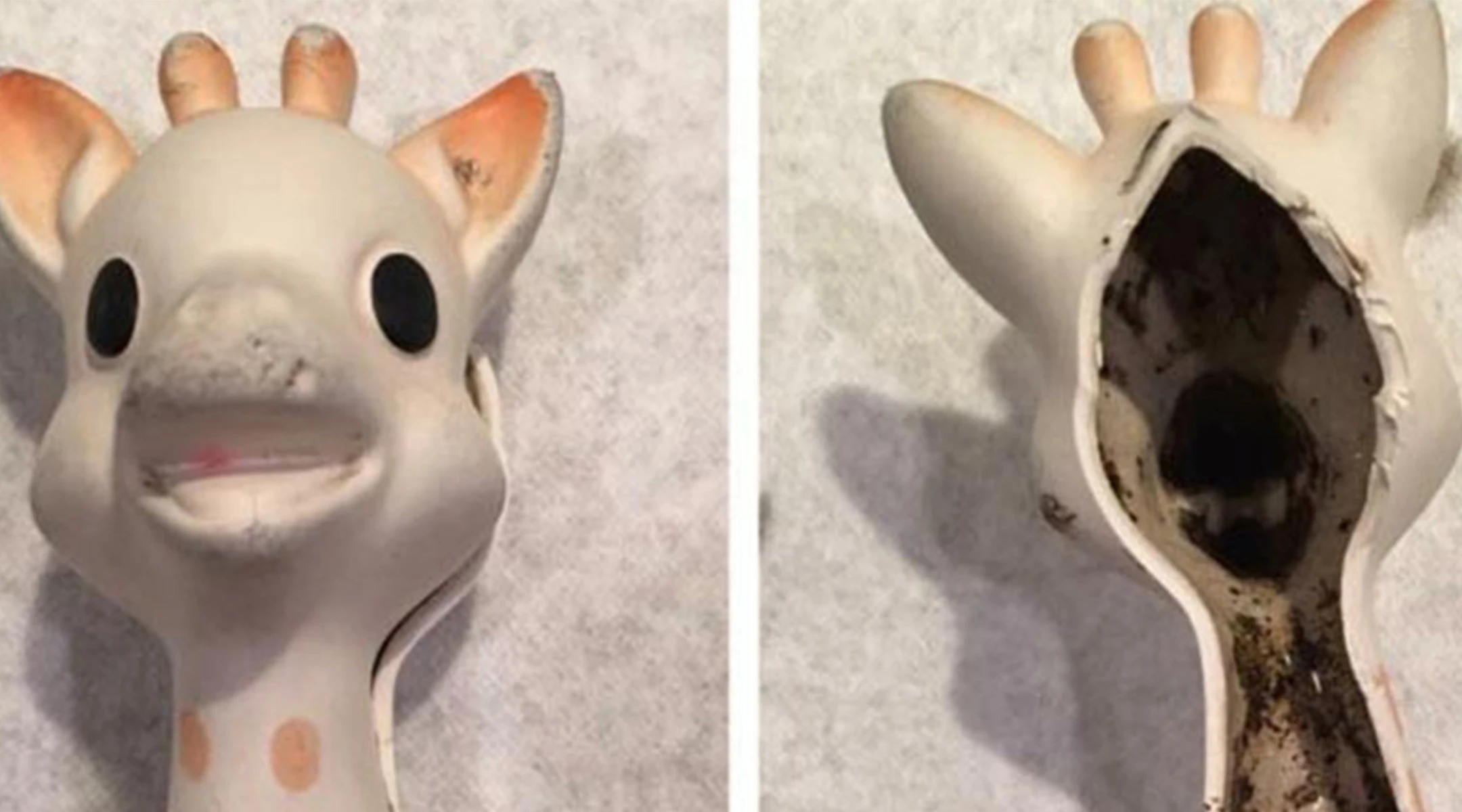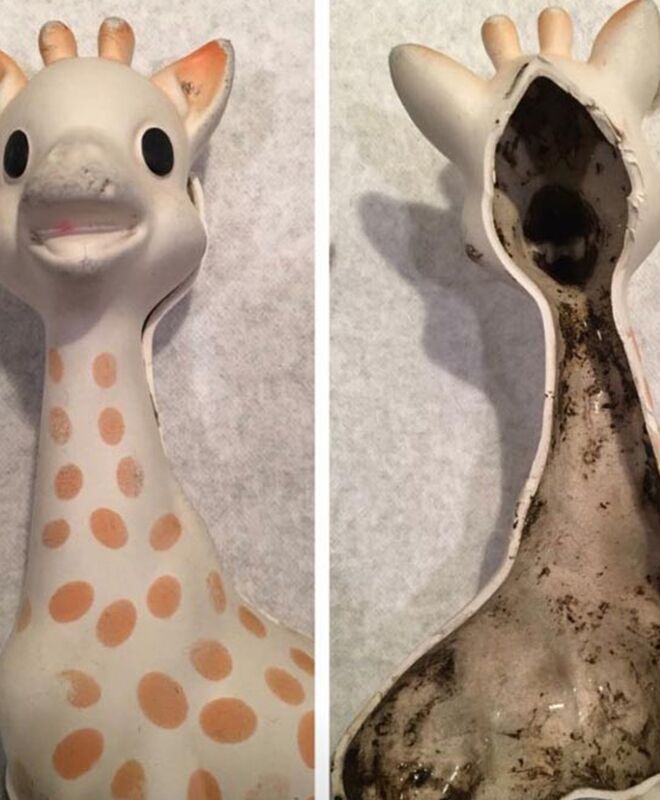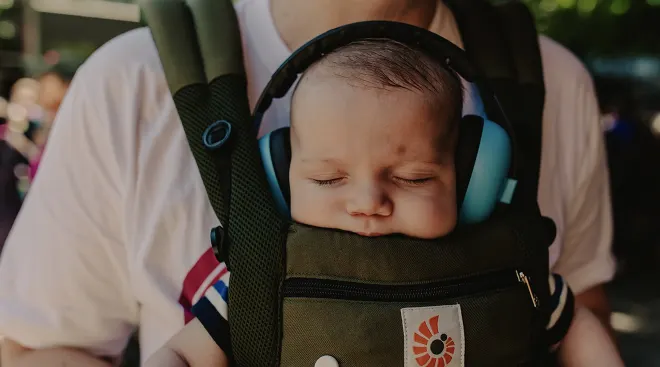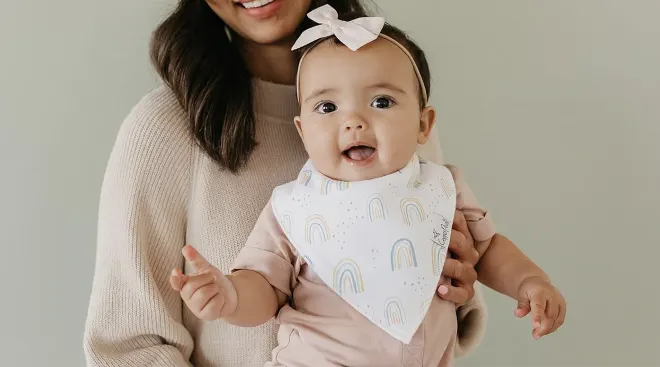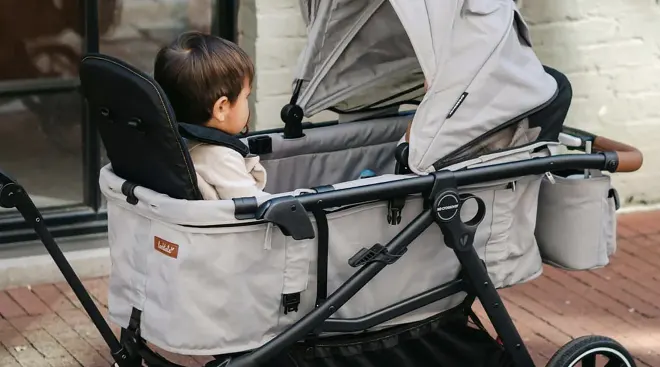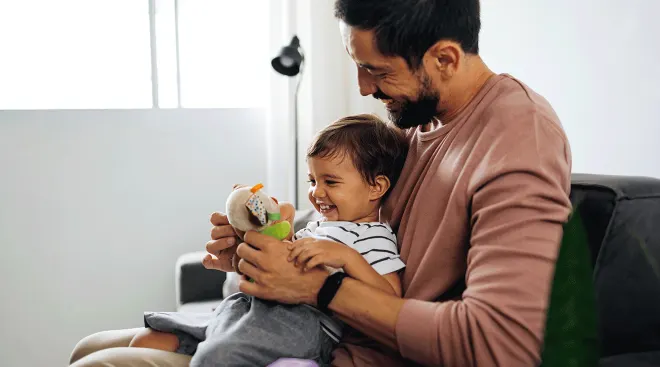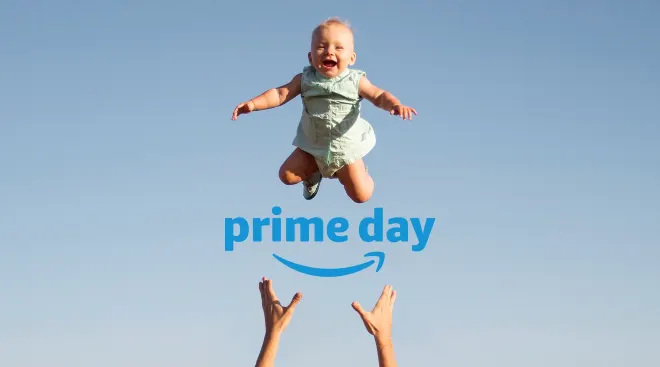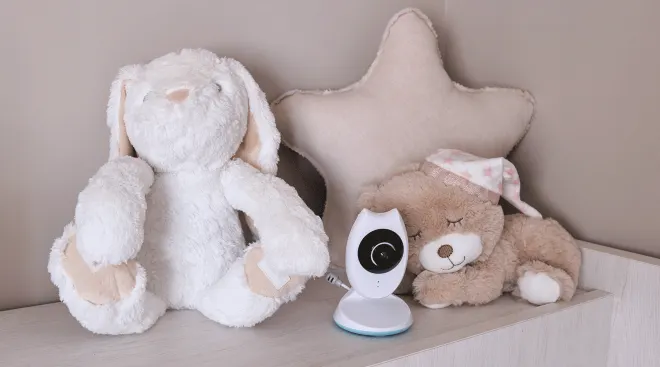What to Do About the Sophie La Girafe Mold Problem
By now, you’ve likely seen images of the inside of baby’s favorite chew toy coated with a layer of mold. The insanely popular Sophie la Girafe is under scrutiny after a pediatric dentist shared a photo of Sophie’s moldy black interior, rescinding her recommendation of the toy. While the incident, along with the handful of others that have come to light, is alarming, there is a reason this happened and measures you can take to do your best to prevent it.
Dana Chianese says that as both as a parent and a dentist, she was a firm believer in the teething toy. But during a recent cleaning of Sophie (per the company’s instructions, using hot, soapy water while never fully submerging the toy), she noticed an odor coming from a hole. So she decided to investigate.
“I decided to cut into Sophie out of curiosity and discovered a science experiment living inside,” Chianese told Goodhousekeeping.com. “Smelly, ugly mold living in my infant’s favorite chew toy! It still hurts my heart to know that for months I allowed my babies to chew on moldy toys. I no longer buy any chew toys with a hole or recommend any to my patients.”
Part of the allure of Sophie la Girafe is that she’s made out of 100 percent natural rubber coated with food grade paint. And while natural rubber is free of toxins and potential allergens, it requires careful cleaning and routine replacement. While Sophie doesn’t have a clear warranty, it’s derived from the same Hevea tree sap that parent-favorite Natursutten all-natural rubber pacifiers come from. Just like Sophie, Natursutten can’t be placed in the dishwasher, needs to be cleaned daily with soap and isn’t recommended for more than six to eight weeks of use.
The biggest problem here? Natursutten costs $9 while Sophie is upwards of $20. You’re not going to buy this teether again and again. A potential solution: Opting for Sophie’s newest iteration, the So Pure Bath Toy, instead. It’s completely sealed and doesn’t feature a hole so that baby can play with the chewable, all-natural rubber toy in the bath. No moisture—or mold—will be trapped inside.
In a response to Good Housekeeping, Sophie la Girafe maintains their original teether is still safe for extended use when handled carefully.
“First of all, it’s important to know that Sophie la Girafe [Sophie the Giraffe] is composed of 100% natural rubber, so the cleaning instructions have to be carefully respected. As indicated on the packaging and in an explanatory leaflet inside the packaging, we recommend to clean the surface of Sophie la Girafe with a damp cloth. It should not be immersed in the water nor rinsed off, to prevent water from getting inside, as she may become damaged. We thus would like to emphasize on the fact that is it important, while cleaning the product, that no water gets inside the whole. As of now, we have not been contacted by Mrs. Chianese nor Mrs. Opera [an Amazon reviewer with similar mold complaints] and were not aware of the situation before reading your article. It is thus difficult for us to comment on the current situation, as we haven’t had the chance to examine the products. Please know that each complaint received is taken very seriously and that the return of the product is always asked for further examination. Furthermore, please know that the safety of children and satisfaction of their parents is our main priority. For the past 55 years, we have always strived to exceed security standards and all of our products comply with the most stringent global standards.”
This isn’t the first time a major brand has been under fire for mold issues. Last year, Canadian parents claimed mold that accumulated in Tommee Tippee sippy cup valves was making their children sick. Ultimately, Tommee Tippee pledged to start manufacturing clear valves so any mold buildup can be identified sooner.
Navigate forward to interact with the calendar and select a date. Press the question mark key to get the keyboard shortcuts for changing dates.
































